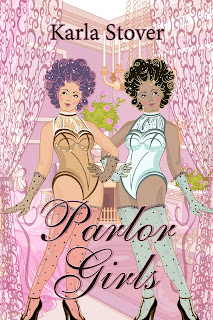Visit Karla Stover's Author Page for book details

 It's been around a long time under various names: Frivolite in France because it was considered to be a frivolous occupation; Oochi in Italy due to the little eye-like shape that is created; and Makouk in the middle East and Schiffchenarbeit in Germany both based on the shape of the shuttle used. In Great Britain, Australia and the United States it's called tatting, possibly because of the disjointed nature of the final project. Some researchers think they have tracked the art back to an obscure, embroidery-knot tying art related to macramé but can't decided who to credit, the early Italians, Egyptians or Chinese. Regardless, various 15th century painting show ladies making strings of knots tied together at close intervals and sewn onto garments. Others, however, think it may have come from netting and the decorative ropework done by sailors and fishermen who were known to create attractive ropework motifs for their wives and girlfriends.
It's been around a long time under various names: Frivolite in France because it was considered to be a frivolous occupation; Oochi in Italy due to the little eye-like shape that is created; and Makouk in the middle East and Schiffchenarbeit in Germany both based on the shape of the shuttle used. In Great Britain, Australia and the United States it's called tatting, possibly because of the disjointed nature of the final project. Some researchers think they have tracked the art back to an obscure, embroidery-knot tying art related to macramé but can't decided who to credit, the early Italians, Egyptians or Chinese. Regardless, various 15th century painting show ladies making strings of knots tied together at close intervals and sewn onto garments. Others, however, think it may have come from netting and the decorative ropework done by sailors and fishermen who were known to create attractive ropework motifs for their wives and girlfriends.
By the 17th century sophisticated patterns had traveled from China to Europe and women were tatting at sophisticated parties and flirting with the shuttle. The results of these early efforts were single little ovals. Not until the 18th century did seamstress / author Eleanore Riego de la Branchardiere and self-described "teacher of fancy works," come up with a way to tat a continuous chain of rings by making little loops called picots. However, in spite of the picots, tatting has never been anything other than a decorative piece of needlework used to trim collars, gloves, handkerchiefs, baby clothes and altar cloths. Queen Carman Sylva of Romania called it "something pretty to do," and she tatted a chalice cover using fine gold wire and working in tiny pearls.
Tatting has been out of favor since World War II, that's 80 years, but it's not expensive. RubyLane.com has a good selection. And as one "anon" once said, "I keep my end tables full of needlework and quilting so I don't have to dust them." It's a blatant misplaced modifier but I get the idea.
BWL INSIDER BLOG PART TWO
CONTEST ALERT!!! There is a $100 (CAD) Walmart gift card up for grabs from BWL Publishing! Please note this gift card is in CANADIAN DOLLARS so must be used in Canada or from the Walmart Canada site. To enter all you have to do is answer 6 questions about our Canadian Historical Brides Collection. Go to the Canadian Historical Brides webpage
where you will find all the answers in the blurbs listed beside each book. Then answer the questions by sending me an email at emilypikkasso AT gmail.com with JANUARY CONTEST in the subject line. PLEASE DO NOT POST COMMENTS OR ANSWERS IN THIS THREAD The winner will be announced on January 31, 2023. Ready? Here are your questions:
What decade does Brides of Banff Springs take place in?
What is the heroine's name in His Brother's Bride?
Which province does Pillars of Avalon take place in?
Left Behind Bride deals with what illegal activity?
In Envy the Wind what is the name of the ship Grace come to Canada on?
Which war is occurring during Where the River Narrows?
Good Luck!














I also found that occupying my hands with crafty works helped me free my mind and facilitated inspiration. While re-roping the cat scratcher post, or sewing, or even cleaning the house, my mind is free to roam. It's also excellent for stress release. Thanks for sharing your process.
ReplyDeleteI once tried to learn how to crochet and ended up with a chain about a mile long. Knitting was taught to me around the age of five. Once made my husband 2 dozen pair of Argyle socks.
ReplyDeleteTatting?! I must try it. I recently learned (re-learned) how to crochet, but I must say, I love the artwork created by a tat. Thanks for sharing, Karla!
ReplyDelete